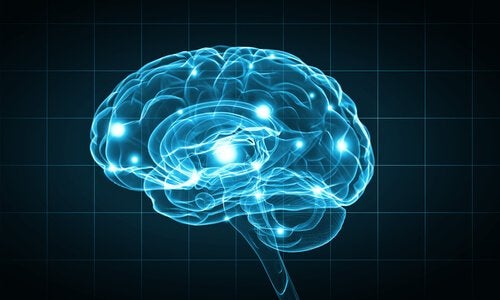Authors such as Dewsbury (1991) define biopsychology as the “scientific study of behavioral biology“, an area also known as psychobiology. However, other authors prefer the term biopsychology because it “indicates a biological approach to the study of psychology, rather than a psychological approach to the study of biology. Today we will talk about research methods in biopsychology.
Thanks to scientific advances, these methods have undergone a great revolution in recent years, how many ancient researchers thought they could see how the brain works in real time? Although there are many research methods in biopsychology, this article will focus on those who study what happens in the brain under certain conditions.
“Man is the most mysterious and puzzling of objects discovered by science. ” Ganivet-
Observing and recording brain activity in real time is a step taken thanks to the different techniques developed throughout the twentieth century, techniques that undoubtedly took a big step forward in the knowledge of our most unknown organ.
This technique involves injecting an X-ray absorbent substance into one of the body compartments, creating a contrast between this compartment and the surrounding tissue.
Cerebral angiography is a contrast X-ray technique, for which a contrast is introduced into a cerebral artery, the objective will be to observe the cerebral circulatory system during an X-ray, this technique is useful to locate vascular lesions and brain tumors, for example.
Using CT scans, it is possible to visualize the structure of the brain. During the exam, the patient is lying in the center of a large cylinder. While the patient is lying down, an X-ray tube and a receiver (placed diametrically opposite) take a large number of separate photographs. This occurs when the transmitter and receiver rotate around the patient’s head.
Then, the information of all the photos is grouped by a computer, this unification allows scanning through a horizontal plane of the brain, this scan can usually be done through eight or nine horizontal cuts of the brain, once all scans are combined, a three-dimensional representation of the brain is obtained.
MRI provides high-resolution images through the different waves emitted by hydrogen atoms when activated by radiofrequency waves in a magnetic field, offers high spatial resolution, and produces three-dimensional images.
THE PTE provides images of brain activity rather than the structure itself. For imaging, the radioactive molecule 2-deoxy-D-glucose (2-DG) is injected into the patient’s carotid artery. Active neurons absorb it quickly and, when not metabolized by them, 2-DG accumulates until it gradually degrades, so we observe which neurons are active at any given time during different activities.
RMf provides images of a higher supply of oxygen to the blood to regions of the brain and is the most effective at measuring brain activity. Compared to PET scans, it has four advantages:
It measures the changes in magnetic fields that occur on the surface of the scalp. These changes occur due to variations in the patterns that serve as the basis for neural activity.
Walsh and Rothwell (2000) point out that EMT “consists of a technique for modifying the activity of an area of the cortex, creating a magnetic field under a coil placed on the skull. “What is EMT? Temporarily part of the brain while evaluating the effect of this closure on behavior and cognition.
Harmful methods are those that destroy certain areas of the brain to see what effect this has on behavior.
Another method of research in biopsychology is electrical stimulation. A nervous system structure is electrically stimulated to obtain data on its functioning. It is common to use a bipolar electrode.
This stimulation influences neurons, modifying their behavior. In general, this usually causes the anti-injury effect. If, as a result of an injury, it is possible, for example, for someone to drastically reduce their sleep hours, stimulating them can lead to excessive sleep behavior.
“Anthropology, biology, physiology, psychology have gathered true mountains of materials to build before man, in all its magnitude, the tasks of his own bodily and spiritual development and his future evolution. “- Leon Trotsky-
Throughout this article the most representative research methods in biopsychology have been discussed. However, it should be mentioned that there are also other research methods in biopsychology that study other areas of the body. Among them, we can find the measurement of muscle tension, recording of eye movements, skin conductivity or cardiovascular activity.
Undoubtedly, the advancement of research methods in biopsychology in recent years has been spectacular, but not definitive, that is, in a few years new techniques will probably emerge that we cannot even imagine today, all of this will contribute to the evolution of neuroscience, which in turn will help to improve the quality of life of countless people affected by a certain type of neural alteration.

